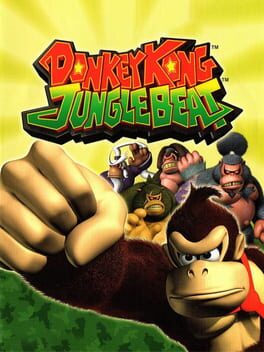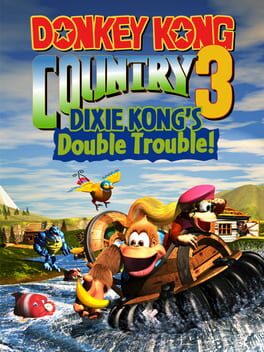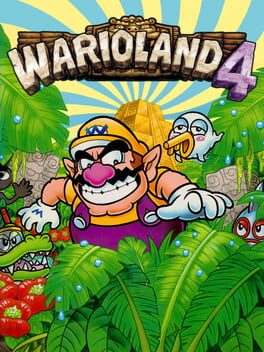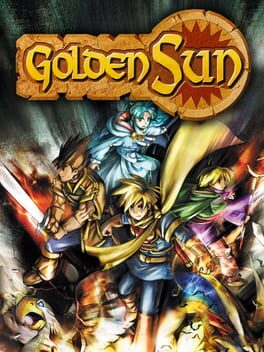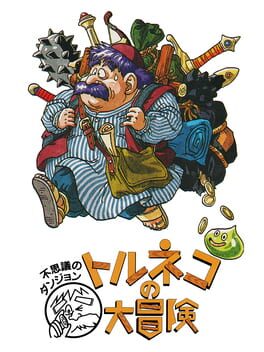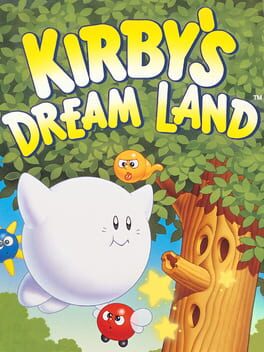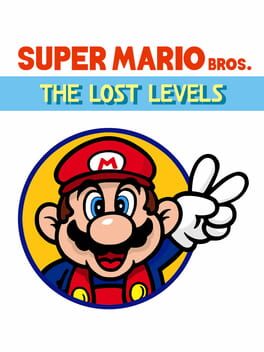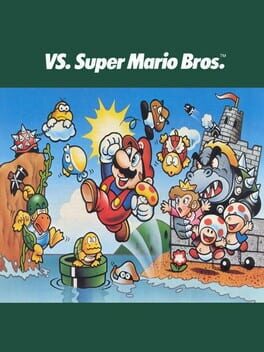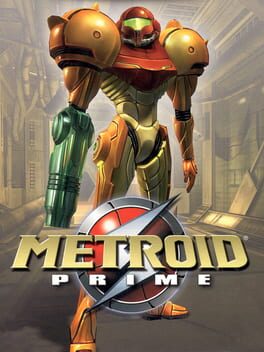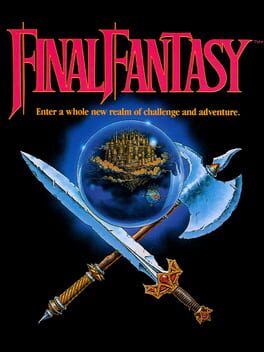Anton_
Yeah, this game fucking rules, it's rather short but extremely fun whilst it lasts and eminently replayable with its focus on high scores and combos, one of Nintendo's last to hyper-focus on that kind of gameplay, but it works well here.
My only real criticisms of the game are the repetitive and rather easy bosses and the slower-paced swimming levels, which feel at odds with the game's otherwise fast-paced platforming and action-focused levels.
If you have access to a pair of bongos and the means to play this game, I cannot recommend it enough as no other game has ever captured the visceral nature of slamming on bongos to beat down your enemies and clapping to scoop up a ton of bananas at once, it makes the game far more satisfying than if it was just on a standard gamepad and I cannot imagine it would be anywhere near as fun if it were.
My only real criticisms of the game are the repetitive and rather easy bosses and the slower-paced swimming levels, which feel at odds with the game's otherwise fast-paced platforming and action-focused levels.
If you have access to a pair of bongos and the means to play this game, I cannot recommend it enough as no other game has ever captured the visceral nature of slamming on bongos to beat down your enemies and clapping to scoop up a ton of bananas at once, it makes the game far more satisfying than if it was just on a standard gamepad and I cannot imagine it would be anywhere near as fun if it were.
Having replayed this again after just finishing a replay of DKC2, I can't see what this game did to gain so many detractors when it plays just fine in the same formula, it's certainly easier than the previous two but I only find the second game all that challenging anyway. I suppose the shift in protagonists and setting upset people back then as well as its status as a late SNES game when the N64 was out in most major markets, except the one the game was made in because fuck Europe lolololol, but that's all pretty silly reasons to feel lukewarm about it in my view.
I think if people go into this one with different expectations about what you're in for, an easier more collection heavy and lightly puzzle-focused affair, you'll have a decent time with it. If you're after the highs of DKC2 with all of its bombast and higher speed platforming, you'll be disappointed as this game is more low-key and laidback, it's well exemplified by how much easier it is to 100% as I was able to find almost every bonus barrel and get every DK coin on my first go with only two exceptions, whereas DKC2 can put them in some extremely cryptic locations and some which are almost necessary to use a guide for a first time as they require going through unmarked invisible walls, DKC3 has nothing on that level and I find the experience of going for 100% a lot less annoying as a result.
Overall, whilst I wouldn't say it's better than DKC2 or the first, it's still a good platformer and not deserving of the hate it gets from some quarters, this isn't a bad game by any means and if you go in with an open mind I believe you'll enjoy it.
I think if people go into this one with different expectations about what you're in for, an easier more collection heavy and lightly puzzle-focused affair, you'll have a decent time with it. If you're after the highs of DKC2 with all of its bombast and higher speed platforming, you'll be disappointed as this game is more low-key and laidback, it's well exemplified by how much easier it is to 100% as I was able to find almost every bonus barrel and get every DK coin on my first go with only two exceptions, whereas DKC2 can put them in some extremely cryptic locations and some which are almost necessary to use a guide for a first time as they require going through unmarked invisible walls, DKC3 has nothing on that level and I find the experience of going for 100% a lot less annoying as a result.
Overall, whilst I wouldn't say it's better than DKC2 or the first, it's still a good platformer and not deserving of the hate it gets from some quarters, this isn't a bad game by any means and if you go in with an open mind I believe you'll enjoy it.
2002
I do like this game, but I've never been able to fuck with it as much as Super or Zero Mission. The atmosphere and narrative are the strongest aspects, in my view. They streamlined the controls down to two buttons, owing to its platform, so well that I think it's better than Super Metroid, which over-complicated itself with redundant functions like the run button.
My main gripe with it is how railroaded it can get, it being linear wouldn't necessarily bother me as much if it didn't arbitrarily block you from backtracking in some of the sectors for seemingly no reason beyond denying you a second chance to get a missile expansion or energy tank you might have missed the first time through, the game often does this and it gets on my nerves whenever it happens as it just blocks any sense of freedom you get, I've seen some people argue this reinforces the theme of Samus not being in control this time around and being the one getting hunted as opposed to the hunter herself, but most of the time the blocks aren't from Adam but just convenient changes in the sector which stop you from properly exploring them unless you get everything possible on the first visit.
You might also think that it's not too big of a deal to wait till later to get all the items, but that's really where the big tedium in Fusion lies, going for 100%. Unless you're consulting a guide, it is not at all well communicated where the hidden paths and areas are to get a lot of the end-game powerups, unless you're spamming power bombs in every other area, the player on a first playthrough CANNOT use the elevators or go into a navigation room as that locks you into the endgame scenario where Adam forcibly locks all doors except the ones that go to the self destruct trigger, on subsequent playthroughs of the same file that restriction is removed, I have no clue why they did that, as the objective marker for the self destruct room is marked at all times, so it's unlikely any player is going to get lost even if they did put the game down for a time. In addition, most of the challenges to get the last few items are often very tricky, like shine spark puzzles or precise jump puzzles that require near pixel-perfect accuracy, or else you need to start over. Simply put, it's not very fun to do and can take up a fair bit of time in what's otherwise a brisk adventure.
Overall, I respect what this game was going for with its tighter hub-based level design and a greater focus on narrative and storytelling than any prior Metroid title, but I do think it loses some of the sense of isolation and piecing together events through what is shown rather than made explicit through an AI telling you everything. The changes to the level design make sense in context of its being a handheld game with a more bite-sized pick-up and play philosophy; that said, it does get a little too handhold-y for my tastes. I don't think the game's major themes would be hurt too badly if they made it a bit more open to at least letting the player backtrack through previously explored areas without arbitrary blocks at your expense.
Despite these flaws, it's still a well-made action game worth playing on its own merits and as a blueprint for where the series will go.
My main gripe with it is how railroaded it can get, it being linear wouldn't necessarily bother me as much if it didn't arbitrarily block you from backtracking in some of the sectors for seemingly no reason beyond denying you a second chance to get a missile expansion or energy tank you might have missed the first time through, the game often does this and it gets on my nerves whenever it happens as it just blocks any sense of freedom you get, I've seen some people argue this reinforces the theme of Samus not being in control this time around and being the one getting hunted as opposed to the hunter herself, but most of the time the blocks aren't from Adam but just convenient changes in the sector which stop you from properly exploring them unless you get everything possible on the first visit.
You might also think that it's not too big of a deal to wait till later to get all the items, but that's really where the big tedium in Fusion lies, going for 100%. Unless you're consulting a guide, it is not at all well communicated where the hidden paths and areas are to get a lot of the end-game powerups, unless you're spamming power bombs in every other area, the player on a first playthrough CANNOT use the elevators or go into a navigation room as that locks you into the endgame scenario where Adam forcibly locks all doors except the ones that go to the self destruct trigger, on subsequent playthroughs of the same file that restriction is removed, I have no clue why they did that, as the objective marker for the self destruct room is marked at all times, so it's unlikely any player is going to get lost even if they did put the game down for a time. In addition, most of the challenges to get the last few items are often very tricky, like shine spark puzzles or precise jump puzzles that require near pixel-perfect accuracy, or else you need to start over. Simply put, it's not very fun to do and can take up a fair bit of time in what's otherwise a brisk adventure.
Overall, I respect what this game was going for with its tighter hub-based level design and a greater focus on narrative and storytelling than any prior Metroid title, but I do think it loses some of the sense of isolation and piecing together events through what is shown rather than made explicit through an AI telling you everything. The changes to the level design make sense in context of its being a handheld game with a more bite-sized pick-up and play philosophy; that said, it does get a little too handhold-y for my tastes. I don't think the game's major themes would be hurt too badly if they made it a bit more open to at least letting the player backtrack through previously explored areas without arbitrary blocks at your expense.
Despite these flaws, it's still a well-made action game worth playing on its own merits and as a blueprint for where the series will go.
2001
2001
This is a pretty good entry level handheld RPG with some good systems design and enjoyable dungeons, clearly riffing on Zelda, but it's doing more than your typical RPG dungeons. The real flaw with the game is how bland the main cast are and how simple the story is, despite the games abundance of text to tell it. It can just get absurd how long some scenes are when what's actually communicated to the player could be boiled down in a fraction of the words used. Overall its a decent RPG, but kind of the epitome of a comfort food game that doesn't ask terribly much from the player nor challenge them in its mechanics or writing.
1987
A significant boost in quality compared to the first NES/FC game with much less grinding outside the final area, more music and more unique enemy types helps with the repetition of tilesets and makes areas feel more distinct from one another.
The addition of party members and facing more than one enemy at a time drastically alters the combat dynamics compared to the first, which was closer to an RNG sort of puzzle box war of attrition where you needed to either outlast an enemy or get lucky with a sleep or fireball spell to deal with them appropriately as the game progressed, this one has a bit more strategy to it though it's a bit undercut by how many of the spells either become redundant or require that end game grind to use and aren't even that effective against the bosses in that end game dungeon.
The other big problem from the original that wasn't really addressed is the vagueness of many of the NPC hints about what items are required to progress, it's extremely unlikely that a player could stumble upon some of the items you need or intuit the advice they give without checking a guide to double check because it's just far too cryptic to aid you a lot of the time.
The end game dungeon is what really brings the game down from a solid 3.5 or 4 star experience though, it's just such a ridiculous slog even with speedup and I cannot imagine spending the hours necessary to do it legitimately when the enemies just don't give out enough XP to warrant how tough they are to defeat, not helped by the final boss being a massive difficulty spike in an of itself that I was at 1hp for my final party member before he finally died.
For those reasons I'd probably recommend most people just play one of the ports on SFC or GBC as they did rebalance the end game and other points to be less grindy and cryptic, but in its original NES/FC incarnation it's still got a fair amount of charm to it despite its relative simplicity and occasional bouts of head scratching and tedium.
The addition of party members and facing more than one enemy at a time drastically alters the combat dynamics compared to the first, which was closer to an RNG sort of puzzle box war of attrition where you needed to either outlast an enemy or get lucky with a sleep or fireball spell to deal with them appropriately as the game progressed, this one has a bit more strategy to it though it's a bit undercut by how many of the spells either become redundant or require that end game grind to use and aren't even that effective against the bosses in that end game dungeon.
The other big problem from the original that wasn't really addressed is the vagueness of many of the NPC hints about what items are required to progress, it's extremely unlikely that a player could stumble upon some of the items you need or intuit the advice they give without checking a guide to double check because it's just far too cryptic to aid you a lot of the time.
The end game dungeon is what really brings the game down from a solid 3.5 or 4 star experience though, it's just such a ridiculous slog even with speedup and I cannot imagine spending the hours necessary to do it legitimately when the enemies just don't give out enough XP to warrant how tough they are to defeat, not helped by the final boss being a massive difficulty spike in an of itself that I was at 1hp for my final party member before he finally died.
For those reasons I'd probably recommend most people just play one of the ports on SFC or GBC as they did rebalance the end game and other points to be less grindy and cryptic, but in its original NES/FC incarnation it's still got a fair amount of charm to it despite its relative simplicity and occasional bouts of head scratching and tedium.
It's remarkable how well this holds up given it's the first in an entire sub-series and they've barely changed it in the 30 years since this game. It's a solid little roguelike with a charming protag, catchy music and an approachable and easily understood progression and mechanics that would only get more refined in the myriad sequels.
1992
This game is a harder expansion of the original with some slight mechanical tweaks and palette-swapped tougher enemies, on those fronts it succeeds and can get much more challenging than the original or its arcade-exclusive revision, you are absolutely expected to have beaten and mastered the original and its controls to get into this one early on, but the later levels do get a bit overboard with some annoying beginners traps that you would only know existed from prior knowledge, as such doing the 1up trick is highly advisable as otherwise, you will probably begin to run dry as it escalates in challenge.
Graphically the game is almost identical but the tweaks and additions they made are generally all improvements, the font is more legible and easier to read, the mushrooms and many other background objects now have faces for the first time and the ground tiles look more naturalistic.
This being an FDS game you'd expect some usage of its additional hardware capabilities but sadly outside the theme when you rescue the Princess it's all exactly the same as the first, a missed opportunity to be sure.
Quite a lot of the hatred this game gets is understandable as on the face of it is a brutally hard and otherwise almost identical sequel, considered by some to be a prelude to the extremely hard kaizo hacks Mario games nowadays or similar ultra-hard indie platformers like Celeste or Super Meat Boy, but Lost Levels is the first of its kind and is generally viewed much more fondly in its home country than the rest of the world, perhaps because the Japanese audience took to heart that this is a game for those that had mastered the original and not something to be played sequentially straight after finishing the first. The game itself even emphasises that fact with two secret worlds after finishing the game once, World 9 which is an obvious reference to the minus world from the original Famicom version of SMB1, and upon beating the base game of Lost Levels 8 times you unlock worlds A through D. Given that World 9 can only be beaten in a single life, they obviously didn't expect anyone but masters to be able to complete such a challenge despite its relatively short length. The other additional worlds are merely an extra for those who are willing to go the distance, not something everyone needs to experience to feel satisfied completing the game.
On the whole, this is a competent, if derivative, sequel to SMB1 but I can see why NOA passed on it back in the day both for its similarity to the original and high difficulty, but with appropriate context and expectations this is a solid challenge for the SMB1 veteran.
Graphically the game is almost identical but the tweaks and additions they made are generally all improvements, the font is more legible and easier to read, the mushrooms and many other background objects now have faces for the first time and the ground tiles look more naturalistic.
This being an FDS game you'd expect some usage of its additional hardware capabilities but sadly outside the theme when you rescue the Princess it's all exactly the same as the first, a missed opportunity to be sure.
Quite a lot of the hatred this game gets is understandable as on the face of it is a brutally hard and otherwise almost identical sequel, considered by some to be a prelude to the extremely hard kaizo hacks Mario games nowadays or similar ultra-hard indie platformers like Celeste or Super Meat Boy, but Lost Levels is the first of its kind and is generally viewed much more fondly in its home country than the rest of the world, perhaps because the Japanese audience took to heart that this is a game for those that had mastered the original and not something to be played sequentially straight after finishing the first. The game itself even emphasises that fact with two secret worlds after finishing the game once, World 9 which is an obvious reference to the minus world from the original Famicom version of SMB1, and upon beating the base game of Lost Levels 8 times you unlock worlds A through D. Given that World 9 can only be beaten in a single life, they obviously didn't expect anyone but masters to be able to complete such a challenge despite its relatively short length. The other additional worlds are merely an extra for those who are willing to go the distance, not something everyone needs to experience to feel satisfied completing the game.
On the whole, this is a competent, if derivative, sequel to SMB1 but I can see why NOA passed on it back in the day both for its similarity to the original and high difficulty, but with appropriate context and expectations this is a solid challenge for the SMB1 veteran.
A fun remix of the classic Super Mario Bros that spices it up with new harder levels, which would be reused in the Lost Levels, and other tweaks to the existing levels to make it all a bit tougher. Anyone experienced with the original console version should give this a shot as it gives it a little extra challenge that the original is lacking after so many playthroughs.
2002
1987
This review contains spoilers
(this is based on the pixel remaster but I did play and complete the NES original a few months ago at the time of writing)
The original Final Fantasy casts a long shadow on the genre and was one of its earlier modest successes in the West, outselling the original Famicom release in North America alone. Still, it's one which often doesn't get much praise today despite its innovations in the nascent genre on home console, as well as its narrative which is a bit more complex than is often given credit.
The story of Final Fantasy at first glance is very simplistic both in content and presentation, the later ports and remakes did spruce it up a bit with some additional bits of dialogue and scenes which do flesh things out a little, but they're relatively small in the grand scheme of things. What gives the story more to chew on is the additional breadcrumbs of lore that the game sprinkles throughout with its art and offhanded comments made by its various NPCs that when pieced together give it more than just a simple heroes journey in a world on the brink of collapse, the twist that the Lufenian people were, in fact, highly technologically advanced recontextualises how far the world fell as a result of the four Fiends ravaging the planet, and this isn't the only example of this as other NPCs mention that dragons and humans once lived together in harmony, the Elves of Elfheim and the Kingdom of Cornelia once had a strong alliance, the mermaids of the sunken shrine have slowly started to abandon their home and sprout legs never returning home. These might seem like fairly inconsequential details or fluff. Still, they do give the world a far greater sense of history and place rather than just being mere pit stops on the quest to defeat the Fiends, to compare it to similar contemporary RPGs like the previous year's Dragon Quest, it certainly gives the player more to think on and ruminate about.
On a mechanical level, the game deserves praise for giving you far greater options and freedom of choice in how a player can shape the experience, the various classes all have distinct roles and utility to them, sans the Thief in the NES original, which gives you a huge number of potential combinations and whilst not all of them will be viable per se, they do make for good challenge runs if you want to test your knowledge of the systems and how best to use them with each class. For myself, I used a fairly standard pick of Fighter, Monk, Red Mage and Black Mage in the NES version and substituted the Red Mage for a White Mage in the Pixel Remaster and Fighter for a Thief, the reason being that the Thief in the original game is sadly extremely undertuned with an attack power comparable to that of the Black Mage and very limited magic ability that does not make up for its shortcomings, the changes in the Pixel Remaster make them a significantly more viable option with greatly buffed attack power that means they can out damage the Fighter and save you some money in the long run with more limited but cheaper equipment needs.
Of course, the raw battle system is only one part of the equation as the game is also rather infamous and hated by some for its D&D-inspired magic system, utilising spell charges instead of the more typical Magic Points systems common of RPGs today, but I maintain that this was necessary to the tension of the game when in combat and dungeons, some of the later ports did replace the spell charges with MP and they became significantly easier as a result, the game just often plays itself in those versions, without the need to carefully consider the usage of magic, do you use room clearing Dia spells on the Undead at the expense of your charges for Cure? Use elemental weaknesses on enemies that the boss of the dungeon might not share? It's all stuff the player has to account for which is completely absent in those versions, the Pixel Remaster did right by going back to spell charges and the game is better for it than not.
The main stumble in the NES version is its lack of auto-targeting when an enemy is killed or flees but the player still has a party member set to do an action to them, resulting in an ineffective message and a wasted turn. Whilst this does mean the player has to remain more invested in the battles and be more observant of the amount of damage you deal and the total HP of each enemy, it can also just extend the amount of time in battles to some tedious lengths, which given the large number of enemies the player can encounter at a given time during a battle does add up considerably as the game goes on. Besides this the NES original has a fair amount of bugs with spells that do nothing at all or are functionally identical to pre-existing ones making picking them up completely pointless, the intelligence stat which is generally thought to have scaled your spells' damage, buff or healing potential also does nothing at all so level 1 magic drastically falls off in the mid to late game and forces you to use high tiers when the intent was likely to have you saviour those for extreme situations. Many other bugs exist in the game besides this but these are the first that players will probably notice or be made aware of by others, and thankfully all of them have been fixed by hacks and the official remasters that Square has made over the years, so if you do intend to play this game like I think you should, then I highly implore you to use such means as the game is much better balanced this way, though by no means is the original unpatched NES version unplayable, it just requires some foreknowledge of these issues to best deal with them.
The musical score by Nobuo Uematsu deserves particular praise given his status as an entirely self-taught musician, all the tunes in the game are memorable and catchy, with particular favourites of mine including the shop theme and Matoya's Cave. Starting with its Wonderswan remake Uematsu composed several new songs and variations on them to add some extra spice to the game, which are all very good as well and help to remove some of the monotony of hearing the same battle theme for every encounter, the versions in the Pixel Remaster are all fantastic listens and elevate the games sense of adventure and wonderment.
The art in the original is also charming for its day and the battle sprites are all lovingly converted from art by Yoshitaka Amano, which the Pixel Remaster retained albeit with added colour and shading which was not possible on the NES, some people aren't super fond of the art in it but I generally find it to be an acceptable interpretation vs some of the earlier remasters which had entirely new sprite work for enemies and the classes which deviated very heavily from the originals for seemingly no reason.
If I were to sum up the original Final Fantasy in a single word it would be passion, the people behind it all cared a great deal about this game and whilst the stories of it being Square's final game and all that are all a bit exaggerated, it did help the company during a financially difficult period, for that and its part of a series that would soar to much greater heights I will always appreciate it and hold it dear to my heart.
The original Final Fantasy casts a long shadow on the genre and was one of its earlier modest successes in the West, outselling the original Famicom release in North America alone. Still, it's one which often doesn't get much praise today despite its innovations in the nascent genre on home console, as well as its narrative which is a bit more complex than is often given credit.
The story of Final Fantasy at first glance is very simplistic both in content and presentation, the later ports and remakes did spruce it up a bit with some additional bits of dialogue and scenes which do flesh things out a little, but they're relatively small in the grand scheme of things. What gives the story more to chew on is the additional breadcrumbs of lore that the game sprinkles throughout with its art and offhanded comments made by its various NPCs that when pieced together give it more than just a simple heroes journey in a world on the brink of collapse, the twist that the Lufenian people were, in fact, highly technologically advanced recontextualises how far the world fell as a result of the four Fiends ravaging the planet, and this isn't the only example of this as other NPCs mention that dragons and humans once lived together in harmony, the Elves of Elfheim and the Kingdom of Cornelia once had a strong alliance, the mermaids of the sunken shrine have slowly started to abandon their home and sprout legs never returning home. These might seem like fairly inconsequential details or fluff. Still, they do give the world a far greater sense of history and place rather than just being mere pit stops on the quest to defeat the Fiends, to compare it to similar contemporary RPGs like the previous year's Dragon Quest, it certainly gives the player more to think on and ruminate about.
On a mechanical level, the game deserves praise for giving you far greater options and freedom of choice in how a player can shape the experience, the various classes all have distinct roles and utility to them, sans the Thief in the NES original, which gives you a huge number of potential combinations and whilst not all of them will be viable per se, they do make for good challenge runs if you want to test your knowledge of the systems and how best to use them with each class. For myself, I used a fairly standard pick of Fighter, Monk, Red Mage and Black Mage in the NES version and substituted the Red Mage for a White Mage in the Pixel Remaster and Fighter for a Thief, the reason being that the Thief in the original game is sadly extremely undertuned with an attack power comparable to that of the Black Mage and very limited magic ability that does not make up for its shortcomings, the changes in the Pixel Remaster make them a significantly more viable option with greatly buffed attack power that means they can out damage the Fighter and save you some money in the long run with more limited but cheaper equipment needs.
Of course, the raw battle system is only one part of the equation as the game is also rather infamous and hated by some for its D&D-inspired magic system, utilising spell charges instead of the more typical Magic Points systems common of RPGs today, but I maintain that this was necessary to the tension of the game when in combat and dungeons, some of the later ports did replace the spell charges with MP and they became significantly easier as a result, the game just often plays itself in those versions, without the need to carefully consider the usage of magic, do you use room clearing Dia spells on the Undead at the expense of your charges for Cure? Use elemental weaknesses on enemies that the boss of the dungeon might not share? It's all stuff the player has to account for which is completely absent in those versions, the Pixel Remaster did right by going back to spell charges and the game is better for it than not.
The main stumble in the NES version is its lack of auto-targeting when an enemy is killed or flees but the player still has a party member set to do an action to them, resulting in an ineffective message and a wasted turn. Whilst this does mean the player has to remain more invested in the battles and be more observant of the amount of damage you deal and the total HP of each enemy, it can also just extend the amount of time in battles to some tedious lengths, which given the large number of enemies the player can encounter at a given time during a battle does add up considerably as the game goes on. Besides this the NES original has a fair amount of bugs with spells that do nothing at all or are functionally identical to pre-existing ones making picking them up completely pointless, the intelligence stat which is generally thought to have scaled your spells' damage, buff or healing potential also does nothing at all so level 1 magic drastically falls off in the mid to late game and forces you to use high tiers when the intent was likely to have you saviour those for extreme situations. Many other bugs exist in the game besides this but these are the first that players will probably notice or be made aware of by others, and thankfully all of them have been fixed by hacks and the official remasters that Square has made over the years, so if you do intend to play this game like I think you should, then I highly implore you to use such means as the game is much better balanced this way, though by no means is the original unpatched NES version unplayable, it just requires some foreknowledge of these issues to best deal with them.
The musical score by Nobuo Uematsu deserves particular praise given his status as an entirely self-taught musician, all the tunes in the game are memorable and catchy, with particular favourites of mine including the shop theme and Matoya's Cave. Starting with its Wonderswan remake Uematsu composed several new songs and variations on them to add some extra spice to the game, which are all very good as well and help to remove some of the monotony of hearing the same battle theme for every encounter, the versions in the Pixel Remaster are all fantastic listens and elevate the games sense of adventure and wonderment.
The art in the original is also charming for its day and the battle sprites are all lovingly converted from art by Yoshitaka Amano, which the Pixel Remaster retained albeit with added colour and shading which was not possible on the NES, some people aren't super fond of the art in it but I generally find it to be an acceptable interpretation vs some of the earlier remasters which had entirely new sprite work for enemies and the classes which deviated very heavily from the originals for seemingly no reason.
If I were to sum up the original Final Fantasy in a single word it would be passion, the people behind it all cared a great deal about this game and whilst the stories of it being Square's final game and all that are all a bit exaggerated, it did help the company during a financially difficult period, for that and its part of a series that would soar to much greater heights I will always appreciate it and hold it dear to my heart.
